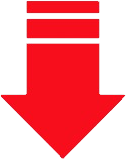Exciting Rental Fleet Updates as at April 2025
- DFH is now offering a simple credit card hold option for the value of the items you rent as the security deposit (EFT upfront no longer required).
- Your rental becomes free of charge if you decide to purchase the same item brand new within 14 days of the rental period.
- Rental fleet significantly enlarged as at March 2025, adding several units including Matrice 4 E, Matrice 4 T, H30T, M350 RTK, RTK3, flood lighting systems, tethered power solutions, M3M etc.
- We maintain a large and well managed Aus wide fleet of drones for dry hire. One of the models you are looking for may not be far from your location – call 13000 029 829 and ask for Rachel to get a quick heads up on the nearest location and best hire price for the item you need.
Contact Rachel our hire fleet manager:
1300 029 829
0490233192
Drafting...
35-min video: T50 Full Spraying Demo
2-min video: Customer scouting stock yards, feral pigs and even mustering.
T30 demo, T40 demo, and T50 demo
8-min video: summary of the T50s flight modes available on controller screen
2-min video: see the high flow rate and penetration a DJI T50 can deliver
Video the T50 holding its droplets in a controlled vortex bubble over a rice plantation
Go to all our YouTube videos (demos, how-to videos, Shorts)
Get fast local quotes for contractor spraying or mapping work here
View dry-hire drone rental fleet and prices
DFH Batch Master chemical mixing stations
DFH aluminium enclosures for spray drones (2-min video)
CASA article: Drones taking agriculture sky high
AAUS: the leading association for uncrewed systems (drones, ROVs, robots) in Aus.
DJI Agriculture main site
Blackberry control action groups: Weeds Australia, VIC , NSW
Cotton Australia main site
© 2025 Drones For Hire. All rights reserved.
This article may not be reproduced, distributed, or transmitted in any form or by any means without prior written permission from the author or publisher, except in the case of brief quotations used for review or scholarly purposes.
Disclaimer: The information provided in this article is for general informational purposes only and does not constitute professional or legal advice. While efforts have been made to ensure the accuracy and relevance of the content, readers should consult with qualified experts or local authorities before making decisions related to agricultural drone use, regulations, or investments.


